In modern hospitality, a Hotel Campus Map ensures great experiences aren’t just delivered—they’re mapped. Static floor plans and printed brochures no longer give guests the clarity or convenience they expect. As a result, hotels are now using Hotel Campus Map to showcase facilities—from pools and restaurants to rooms and event spaces—visually and in real time.—from pools and restaurants to rooms and event spaces—visually and in real time.
Much like in “Mapping Hotel Branches for Better Hospitality Management“, MAPOG lets hotels turn static layouts into dynamic, location-based guides that guests can explore on any device, improving both engagement and operations.
Key Concept: Why Map Your Hotel Layout?
An interactive map goes beyond “where” and adds “why it matters.” Therefore, each amenity becomes part of a connected guest experience, helping visitors navigate and staff manage better. Hotels can:
- Firstly, organize amenities and service zones visually
- Show guest, staff-only, and utility areas distinctly
- Add details like hours, capacity, and accessibility
- Finally, filter by amenity type, floor, or usage
Similarly “Enhancing Hotel Experiences with Mobile Data Collection Survey App“, MAPOG enables hotels to embed live, location-based data—making navigation seamless and planning more efficient.
Step-by-Step: How to Build an Interactive Hotel Amenities Map on MAPOG
Step 1: Start a New Project
- Visit MAPOG and log in
- Click “Create New Story Map”
- Name it something like Hotel Amenities Guide
- Add a short description—e.g., Explore our hotel’s facilities including rooms, dining, recreation, and event spaces.
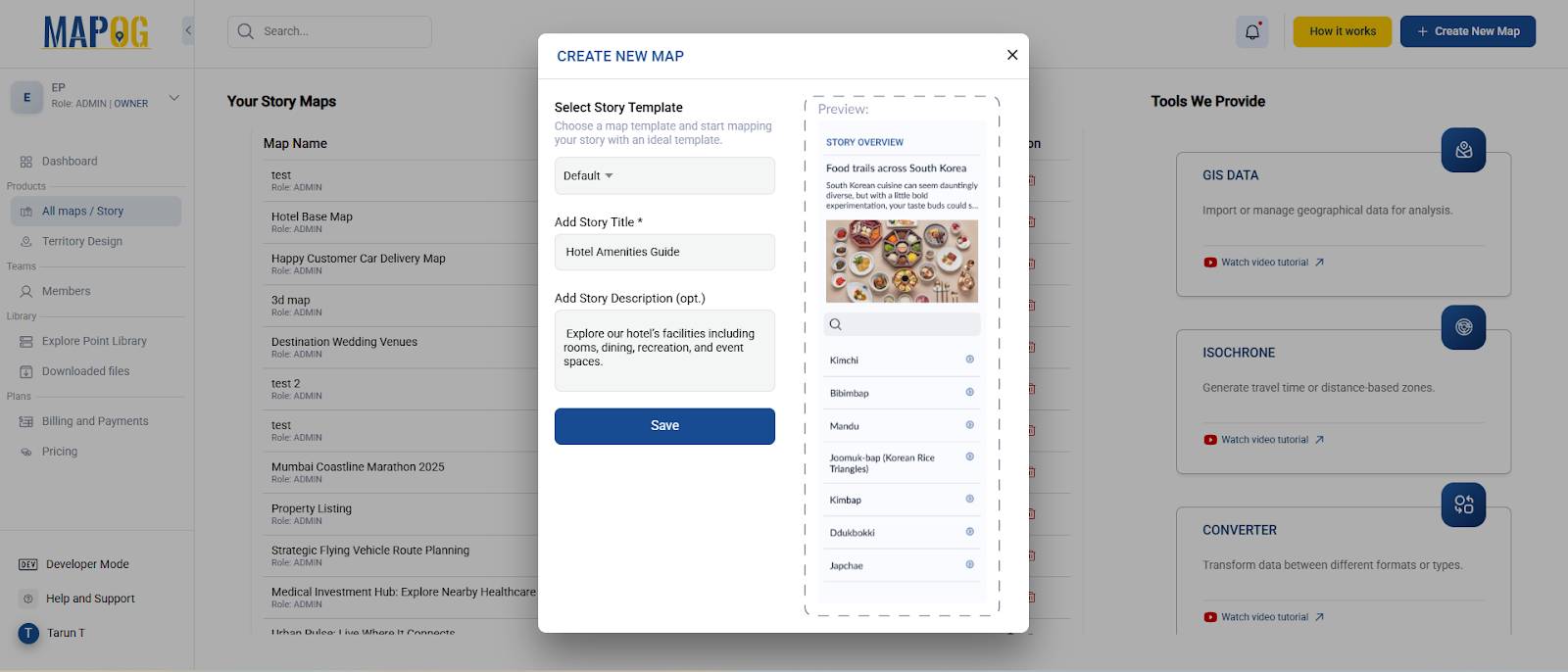
Step 2: Locate the Hotel
- Use the search bar to find the hotel or enter latitude/longitude coordinates
- Then, zoom in to the exact property location for accuracy
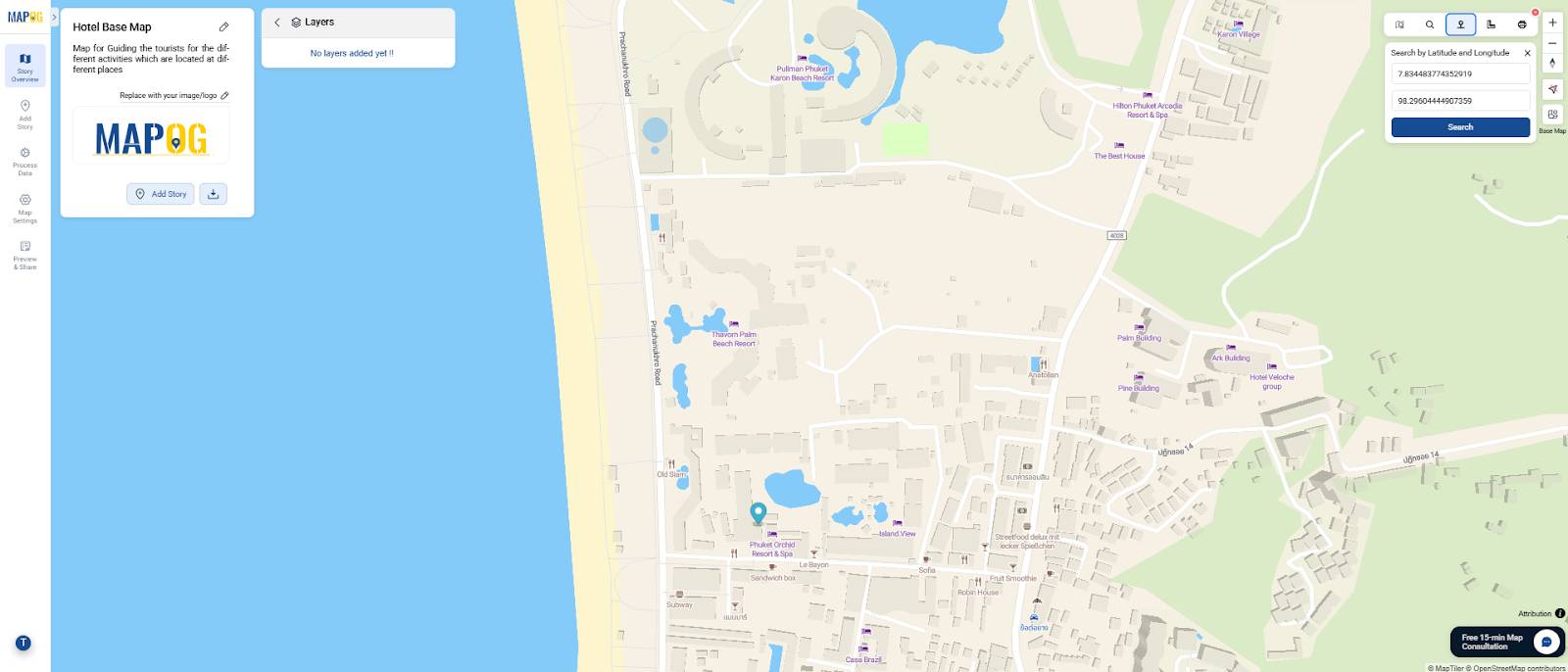
3: Upload and Align the Base Map
- Go to Process Data → Georeferencing
- Upload the hotel’s base layout (PDF/JPG/PNG)
- In Input Selection, pick at least 3–4 control points and match them to the real-world map
- Rotate, scale, and adjust opacity until the base map aligns perfectly with the satellite view

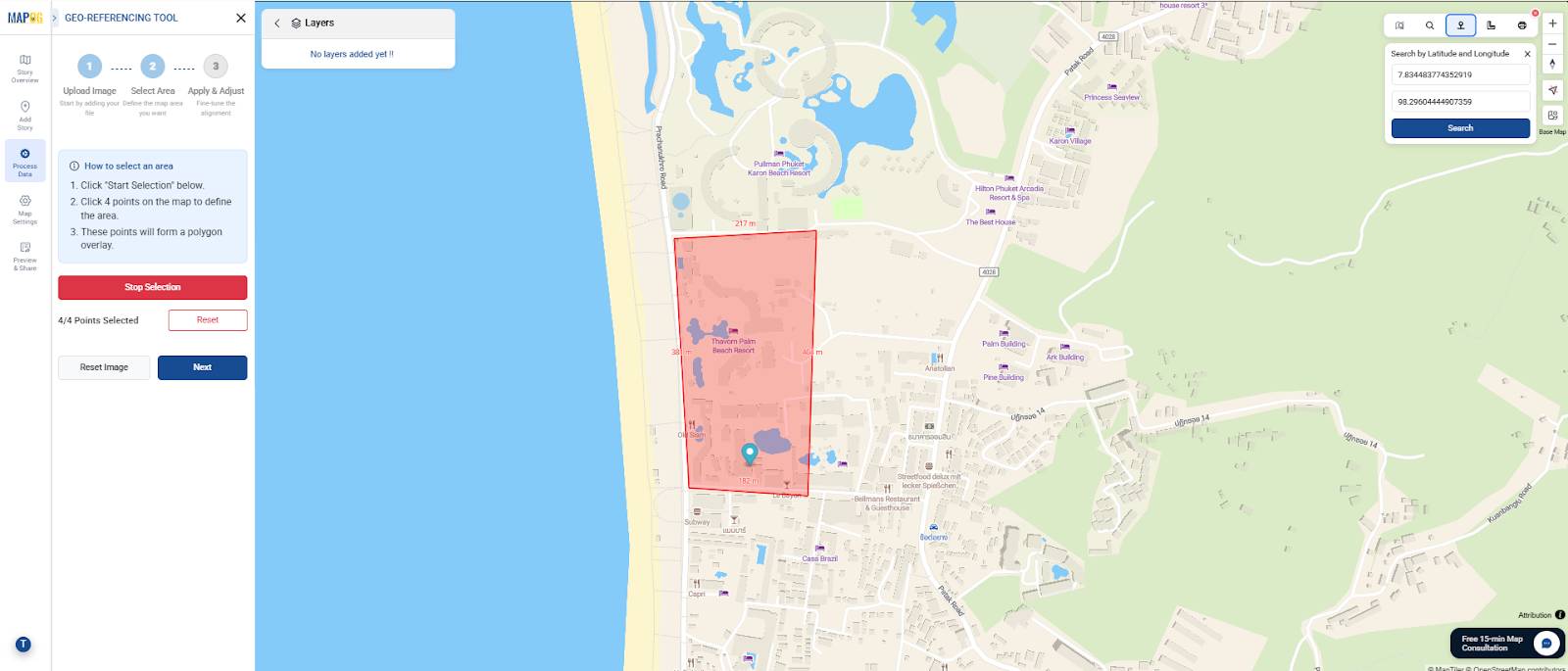

4: Add Amenities to the Map
- Go to Add Story → Add Manually
- Place point markers for each facility (e.g., pool, restaurant, rooms)
- Add amenity name, a short description, and an image
- Then, repeat for all facilities.
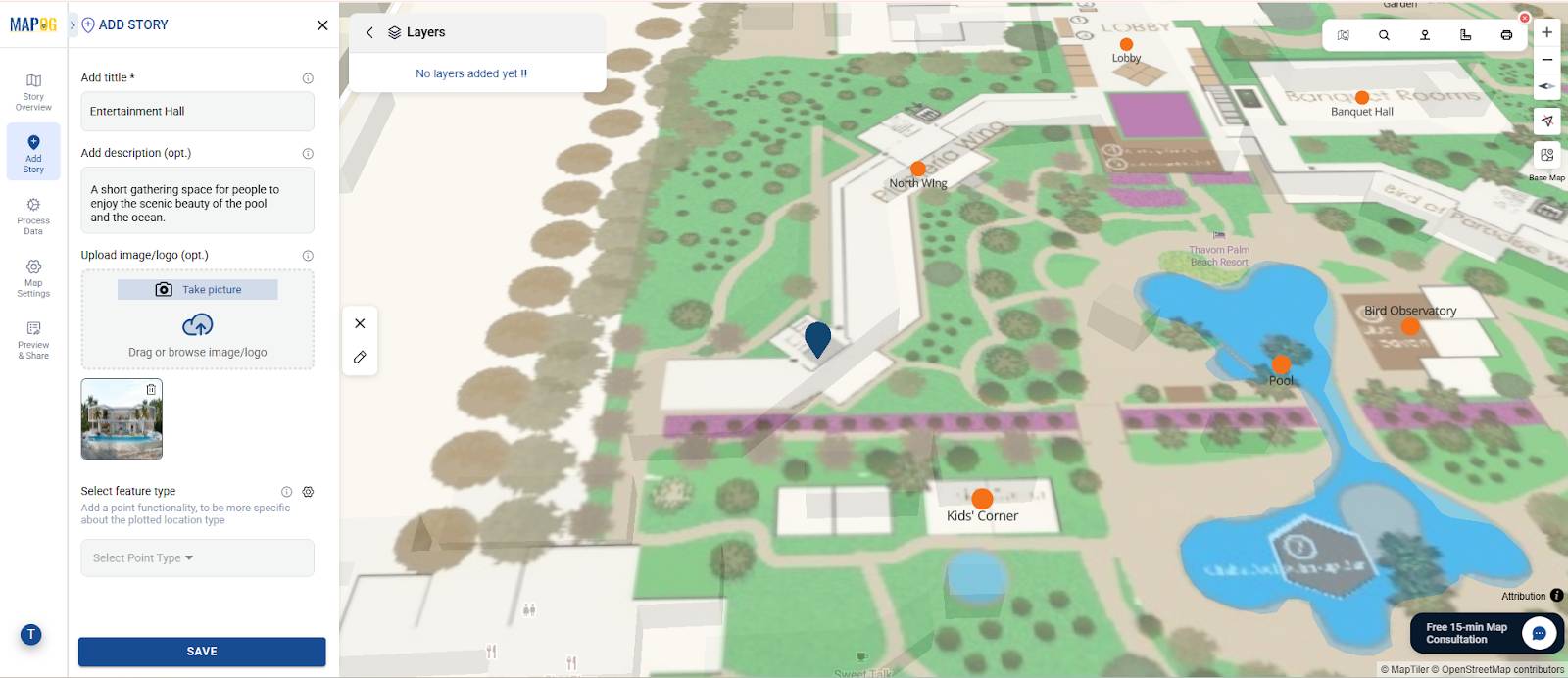
5: Create Custom Location Types
- Go to Location Type Management and create a type like Hotel Facility
- Add fields such as:
- Operating Hours
- Capacity
- Accessibility Features
- Then, click Save to apply the fields to all future locations
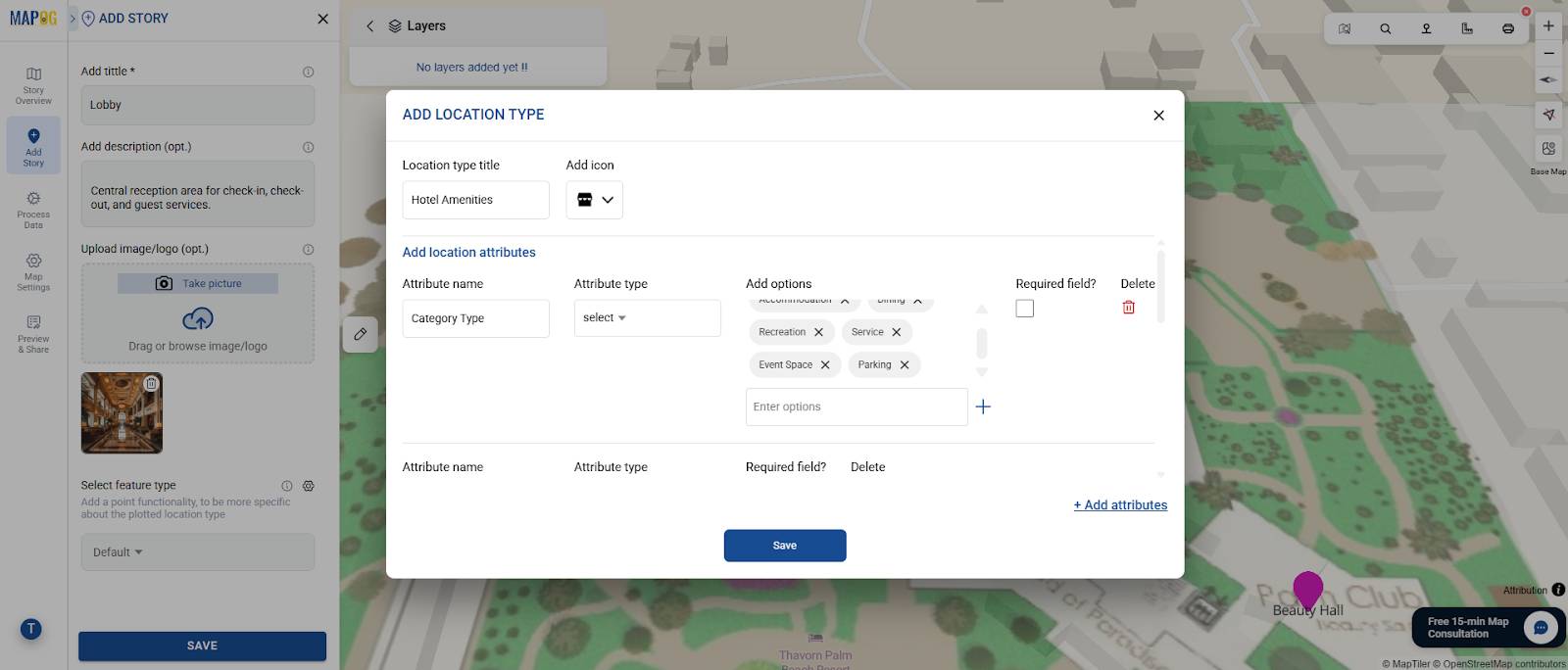
7: Style Your Map for Clarity
- Use Point Customization to:
- Assign icons or colors based on amenity type
- Add labels for quick identification
- Adjust opacity for better layering over the base map
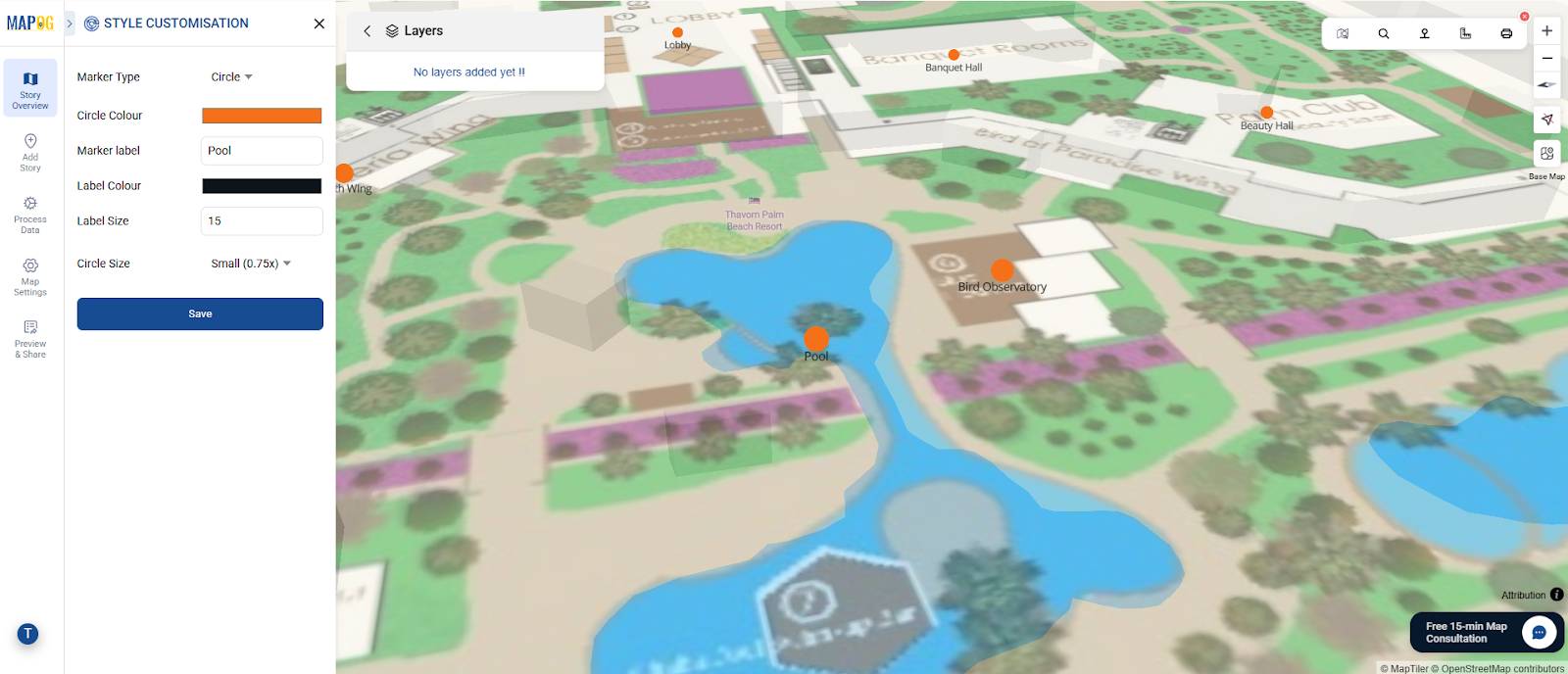
8: Share and Publish
- Go to Share & Publish.
- Choose visibility (Public or Private)
- Then, share via link, or embed the map on the hotel’s website for guests and staff to use
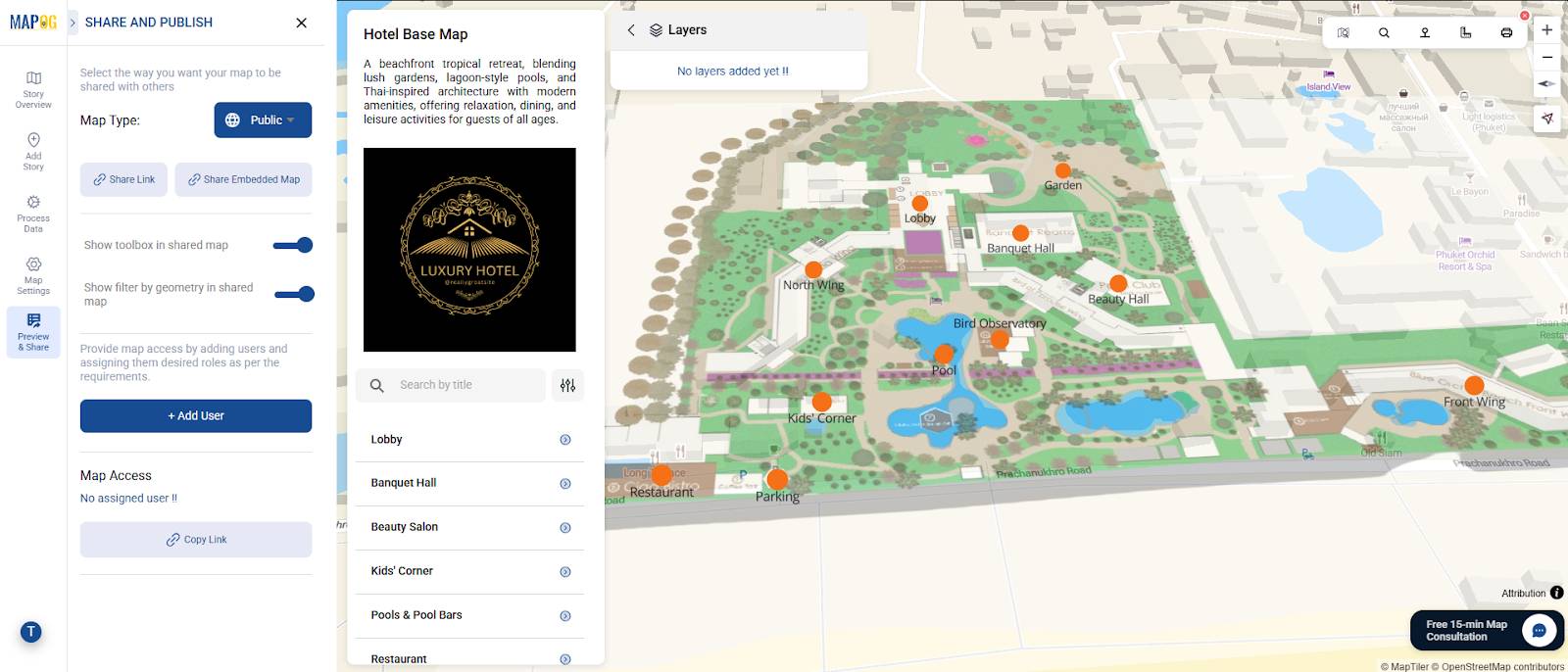
Industry Use & Benefits of Interactive Hotel Maps
Interactive hotel maps are changing how hospitality teams operate and guests experience their stay:
- Firstly, Hotel Managers use them to plan and optimize facility layouts
- Guest Services Teams help visitors navigate amenities with ease
- Event Planners locate and promote spaces like banquet halls and meeting rooms
- Finally, Operations & Maintenance teams track service areas and utilities for better management
For example, when creating a property layout like “Incredible India Itinerary: A Cultural Circuit on the Map“, hotels can guide guests through their entire experience—showing dining options, recreation spots, and event spaces in one seamless view.
MAPOG makes this process visual, organized, and easy to share, whether it’s for internal coordination or guest-facing applications.
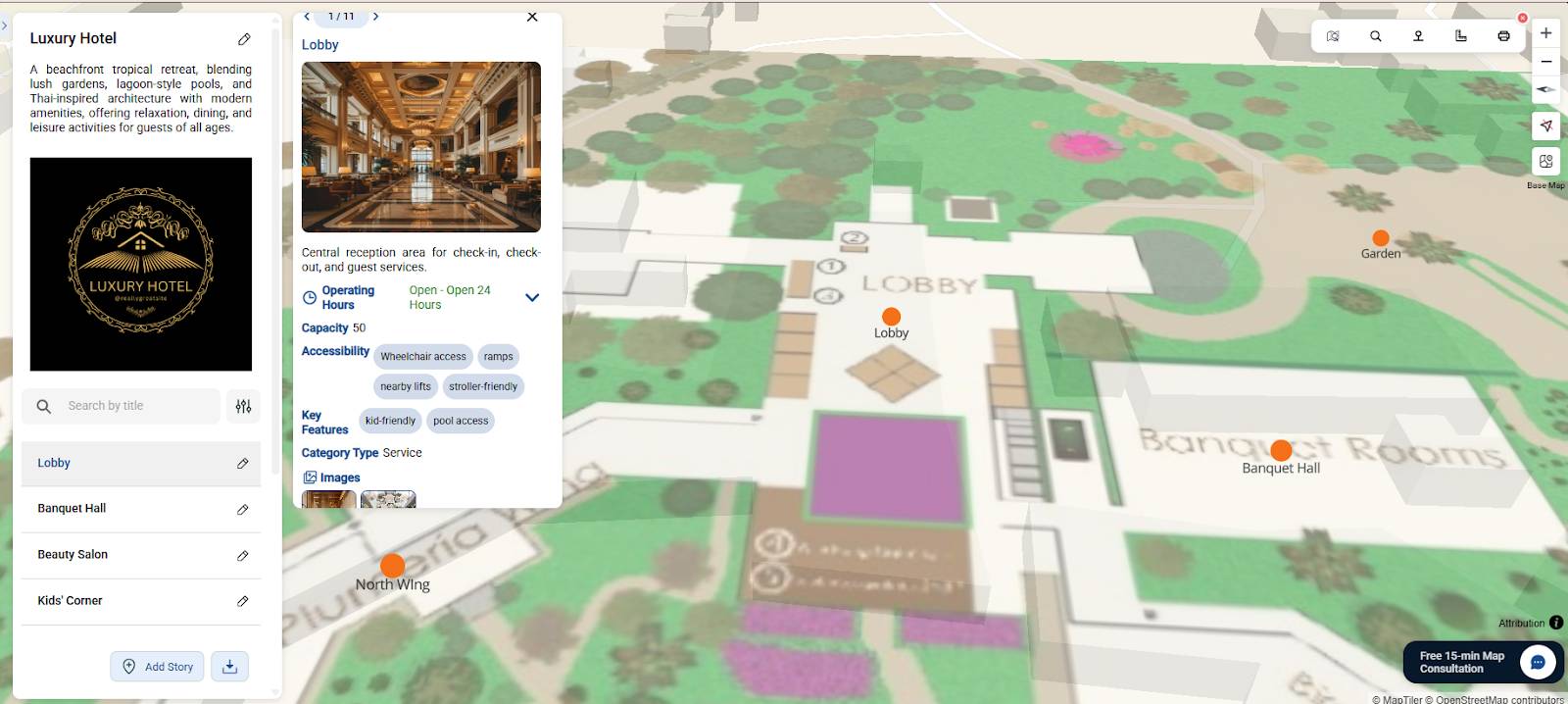
Conclusion:
With MAPOG, hotels can elevate their property presentation beyond static floor plans. By adding spatial context, interactive filters, and real-time facility details, each amenity becomes part of a seamless guest experience—more engaging, transparent, and valuable for both visitors and staff.
An interactive hotel map isn’t just a digital tool—it’s a strategic asset for enhancing hospitality.